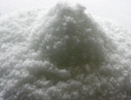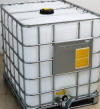Search for the supplies that you need here:
DMF Support and Documentations Available | |
 WHO-GMP Certified Good Manufacturing Practice Certified by World Health Organization |  WC, Written Confirmation for Active Substance to be imported into European Union (EU). |
Sodium Fluoride USP BP IP EP Analytical Reagent Grade Manufacturers
Anmol Chemicals is a manufacturer supplier exporter of Sodium Fluoride and it offers materials as per IP BP EP Ph Eur USP NF JP FCC Food Grade as per the the latest monograph at best prices. Anmol Chemicals Group, established in 1976, is the pioneer manufacturer of Specialty Chemicals, Pharmaceutical Excipients, Some API, Food Chemicals in India. Anmol Chemicals Group has manufacturing facilities spread across Western India, representatives in Houston, Chicago USA and Dubai, UAE. We also have toll manufacturing units for processing chemicals in a few countries around the world. We make IP, BP, EP, USP, NF, Ph. Eur., JP, FCC or Food Grade, Analytical Reagent Grade, LR or Laboratory Reagent Grades and Pure Grades of various chemicals. All our items are analyzed to meet the required standards. We can supply the product in grams for your laboratory trial and in tons for your plant scale jobs.
We manufacture Bulk Drugs / API, Excipients, Pharmaceuticals (IP BP USP NF Ph Eur EP JP), Specialty Chemicals (Pure/Reagent), Mineral Fortifiers (FCC). Our manufacturing facility is FDA approved and GLP, cGMP, ISO9001, ISO14001, ISO/IEC 17025, ISO22000, FSSC 22000, ISO45001, FSSAI, Kosher, HALAL, COPP, WHO-GMP certified and Written Confirmation (WC) is available. Solid materials can be customized for particle size, shape, and bulk density. We observe WHO Good Manufacturing Practices and Good Laboratory Practices. We are a government-recognized STAR Export House and "Authorised Economic Operator (AEO)" per Indian Customs.
All technical documents and DMF support available.
Sodium Fluoride SDS of Manufacturers

Synonyms: Sodium Fluoride
CAS Number: 7681-49-4, Molecular Weight: 41.99, Chemical Formula: NaF, EINECS EC Number: 231-667-8, FEMA: ----,
Sodium Fluoride BP Grade Ph Eur Specifications
DEFINITION
Content: 98.5 per cent to 100.5 per cent (dried substance).
CHARACTERS
Appearance: White or almost white powder or colourless crystals.
Solubility: Soluble in water, practically insoluble in ethanol (96 per cent).
IDENTIFICATION
A. To 2 ml of solution S (see Tests) add 0.5 ml of calcium chloride solution R. A gelatinous white precipitate is formed that dissolves on adding 5 ml of ferric chloride solution R1.
B. To about 4 mg add a mixture of 0.1 ml of alizarin S solution R and 0.1 ml of zirconyl nitrate solution R and mix. The colour changes from red to yellow.
C. Solution S gives reaction (a) of sodium.
TESTS
Solution S: Dissolve 2.5 g in carbon dioxide-free water R without heating and dilute to 100 ml with the same solvent.
Appearance of solution: Solution S is clear (2.2.1) and colourless.
Acidity or alkalinity: Dissolve 2.5 g of potassium nitrate R in 40 ml of solution S and dilute to 50 ml with carbon dioxide-free water R. Cool to 0C and add 0.2 ml of phph solution R. If the solution is colourless, not more than 1.0 ml of 0.1 M sodium hydroxide is required to produce a red colour that persists for at least 15 s. If the solution is red, not more than 0.25 ml of 0.1 M hydrochloric acid is required to change the colour of the indicator.
Chlorides: Maximum 200 ppm.
Fluorosilicates: Heat to boiling the neutralised solution obtained in the test for acidity or alkalinity and titrate whilst hot. Not more than 0.75 ml of 0.1 M sodium hydroxide is required to change the colour of the indicator to red.
Sulphates: Maximum 200 ppm.
Loss on drying: Maximum 0.5 per cent, determined on 1.000 g by drying in an oven at 130C for 3 h.
ASSAY
Dissolve 0.100 g in water R and dilute to 60 ml with the same solvent. Titrate with 0.1 M La-nitrate (La(NO3)3), determining the end-point potentiometrically (2.2.20) using a fluorideselective
indicator electrode and a silver-silver chloride reference electrode.
1 ml of 0.1 M La-nitrate ( La(NO3)3) is equivalent to 12.60 mg of NaF.
We also manufacture Sodium Fluoride of EP grade.
Sodium Fluoride USP Grade Specifications
NaF 41.99 -- CAS 7681-49-4
Sodium Fluoride contains not less than 98.0 percent and not more than 102.0 percent of NaF, calculated on the dried basis.
Identification:
A: Place 1 g in a platinum crucible in a well-ventilated hood, add 15 mL of sulfuric acid, and cover the crucible with a piece of clear, polished glass. Heat the crucible on a steam bath for 1 hour, remove the glass cover, rinse it in water, and wipe dry: the surface of the glass is etched.
B: A solution (1 in 25) responds to the tests for Sodium.
Tests:
Acidity or alkalinity: Dissolve 2.0 g in 40 mL of water in a platinum dish, add 10 mL of a saturated solution of potassium nitrate, cool the solution to 0 , and add 3 drops of phph. If no color appears, a pink color persisting for 15 seconds is produced by not more than 2.0 mL of 0.10 N sodium hydroxide. If the solution is colored pink by the addition of phph, it is rendered colorless by not more than 0.50 mL of 0.10 N sulfuric acid. Save the neutralized solution for the test for Fluosilicate.
Loss on drying: Dry it at 150 for 4 hours: it loses not more than 1.0% of its weight.
Fluosilicate: After the solution from the test for Acidity or alkalinity has been neutralized, heat to boiling, and titrate while hot with 0.10 N sodium hydroxide until a permanent pink color is obtained: not more than 1.5 mL of 0.10 N sodium hydroxide is required.
Chloride: Dissolve 300 mg in 20 mL of water, and add 200 mg of boric acid, 1 mL of nitric acid, and 1 mL of 0.1 N silver nitrate: any turbidity produced is not greater than that of a blank to which has been added 1.0 mL of 0.0010 N hydrochloric acid (0.012%).
Heavy metals: To 1 g, in a platinum dish or crucible, under a hood, add 1 mL of water and 3 mL of sulfuric acid, and heat at as low a temperature as practicable until all of the sulfuric acid has been expelled. Dissolve the residue in 20 mL of water, neutralize the solution to phph with ammonium hydroxide, add 1 mL of glacial acetic acid, dilute with water to 45 mL, filter, and use 30 mL of the filtrate for the test: the limit is 0.003%.
Assay: [NOTE—Store all solutions, except the Buffer solution, in plastic containers.]
Buffer solution: Dissolve 57 mL of glacial acetic acid, 58 g of sodium chloride, and 4 g of (1,2-cyclohexylenedinitrilo)tetraacetic acid in 500 mL of water. Adjust with 5 N sodium hydroxide to a pH of 5.25 ± 0.25, dilute with water to 1000 mL, and mix.
Standard preparations: Dissolve an accurately weighed quantity of USP Sodium Fluoride RS quantitatively in water to obtain a solution containing 420 µg per mL. Each mL of this solution (Standard preparation A) contains 190 µg of fluoride ion (10 2 M). Transfer 25.0 mL of Standard preparation A to a 250-mL volumetric flask, dilute with water to volume, and mix. This solution (Standard preparation B) contains 19 µg of fluoride ion per mL (10 3 M). Transfer 25.0 mL of Standard preparation B to a 250-mL volumetric flask, dilute with water to volume, and mix. This solution (Standard preparation C) contains 1.9 µg of fluoride ion per mL (10 4 M).
Assay preparation: Transfer about 100 mg of Sodium Fluoride, accurately weighed, to a 250-mL volumetric flask. Add 50 mL of water, mix for 5 minutes, dilute with water to volume, and mix. Transfer 10.0 mL of this solution to a 50-mL volumetric flask, dilute with water to volume, and mix.
Procedure: Pipet 20 mL of each Standard preparation and of the Assay preparation into separate plastic beakers each containing a plastic-coated stirring bar. Pipet 20 mL of Buffer solution into each beaker. Concomitantly measure the potentials (see pH 791 ), in mV, of the solutions from the Standard preparations and of the solution from the Assay preparation, with a pH meter capable of a minimum reproducibility of ±0.2 mV and equipped with a fluoride-specific ion-indicating electrode and a calomel reference electrode. [NOTE—When taking measurements, immerse the electrodes in the solution, stir on a magnetic stirrer having an insulated top until equilibrium is attained (1 to 2 minutes), and record the potential. Rinse and dry the electrodes between measurements, taking care to avoid damaging the crystal of the specific-ion electrode.] Plot the logarithms of the fluoride-ion concentrations, in µg per mL, of the Standard preparations versus potential, in mV. From the measured potential of the Assay preparation and the standard response line, determine the concentration, C, in µg per mL, of fluoride ion in the Assay preparation. Calculate the quantity, in mg, of fluoride ion in each mL of the Oral Solution taken by the formula:
0.5(C / V)
in which C is the determined concentration of fluoride, in µg per mL, in the Assay preparation, and V is the volume, in mL, of Oral Solution taken.
Calculate the quantity, in mg, of NaF in the portion of Sodium Fluoride taken by the formula:
(41.99 / 18.998)(1.25C)
in which 41.99 is the molecular weight of sodium fluoride; 18.998 is the atomic weight of fluorine; and C is the determined concentration of fluoride, in microgm per mL, in the Assay preparation.
Sodium Fluoride Analytical Reagent Grade Specifications
Molecular Formula: NaF
Formula Weight 41.99
CAS Number 7681-49-4
REQUIREMENTS
Assay: 99% NaF
MAXIMUM ALLOWABLE
Insoluble matter: 0.02%
Loss on drying at 150C: 0.3%
Chloride (Cl): 0.005%
Titrable acid: 0.03 meq/g
Titrable base: 0.01 meq/g
Sodium fluosilicate (Na2SiF6): 0.1%
Sulfate (SO4): 0.03%
Sulfite (SO2): 0.005%
Heavy metals (as Pb): 0.003%
Iron (Fe): 0.003%
Potassium (K): 0.02%.
Keywords: Sodium Fluoride IP BP Ph Eur EP USP Analytical Reagent FCC Food Grade CAS Number 7681-49-4 Manufacturer Supplier Exporter Monograph Uses Chemical Molecular Formula Weight.



Manufacturer Supplier Exporter
ANMOL CHEMICALS Private Limited
Representatives in Houston, Chicago and New York, USA
TEL: (OFF) +91 22 23726950, +91 22 23774610, +91 22 23723564
Taloja Navi Mumbai, Banglore, INDIA
e-mail: info@anmol.org
Copyright and Usual Disclaimer is Applicable
Last updated 23-oct-25
Exporters to USA, Canada, UAE, Kuwait, Qatar, Gautemala, Tunisia, Europe, South Africa, Bangladesh, Sri Lanka, Tanzania, Kenya, Egypt, Iraq, Turkey, Israel, Vietnam, Nigeria, Uganda, Brazil, Chile, Argentina, Dubai, UAE, Saudi Arabia, Cameroon, Mexico, Brazil, Chile, Argentina, Korea, Thailand, Malaysia, Indonesia, Jakarta, Australia, China, Germany, France, etc.
Representatives in New York, Houston - Texas, Chicago - Illinois, Los Angeles.
All products are Sold for Industrial and Laboratory Use only.
Fast Selling IP BP Ph Eur EP USP NF JP Analytical Reagent FCC Food Grades of Chemicals by Anmol Chemicals
Ammonium Persulfate --- Acetic Acid Glacial --- Aluminum Chloride --- Ammonium bicarbonate --- Benzyl Alcohol --- Butylated Hydroxyanisole --- Butylated Hydroxytoluene --- Boric Acid --- Calcium Butyrate --- Calcium Chloride --- Calcium Hydroxide --- Calcium Lactobionate --- Calcium Saccharate --- Carbamide Peroxide --- Calcium Oxide --- Calcium Sulfate --- Chromic Chloride --- Fumaric Acid --- Magnesium Butyrate --- Magnesium Chloride --- Magnesium Sulfate --- Malic Acid --- Maleic Acid --- Manganese Chloride --- Manganese Sulfate --- Octyldodecanol --- Oleic acid --- Phenylethyl Alcohol --- Propylene Carbonate --- Potassium Hydroxide Pellets --- Potassium Alum --- Selenious Acid --- Sodium Acetate --- Sodium Bromate --- Sodium Selenite --- Sodium Perborate --- Sodium Hydroxide --- Sodium Sulphate --- Sodium Sulfide --- Sodium Thiosulfate --- Urea --- Zinc Chloride --- Zinc Sulphate ---
Sodium Fluoride
IP BP Ph Eur USP EP Analytical Reagent Grades Manufacturers



















